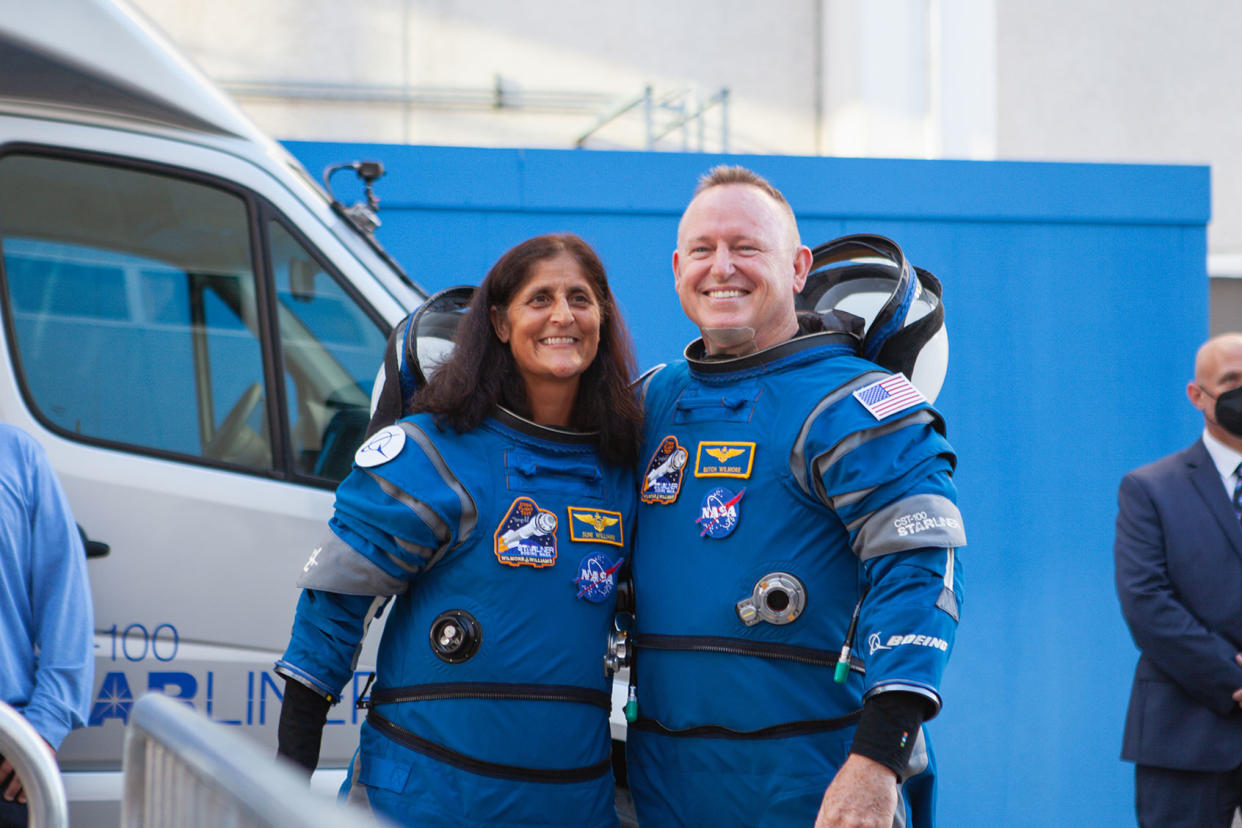NASA astronauts must analyze Boeing Starliner failures before returning home

- Oops!Something went wrong.Please try again later.
- Oops!Something went wrong.Please try again later.
The return trip of the Boeing Starliner commercial space craft has been delayed a third time so that NASA and Boeing engineers can collect critical data about the series of failures which plagued the vessel during its journey to the International Space Station. NASA astronauts Suni Williams and Butch Wilmore will remain safely aboard the ISS — where the Starliner is currently docked on the station's Harmony module — until at least July 2nd to accommodate a previously scheduled spacewalk that day, the agency said in a Friday statement.
"The problems being reported on the Starliner, namely reaction control thruster and helium leaks in the propulsion system, are all located on the spacecraft’s service module. When the crew departs the ISS and deorbits, the service module is discarded and burns up in the atmosphere on reentry. Thus, the helium systems and thrusters will not return to Earth for failure analysis. They’re gone. As such, the only way to get insight into what might be going on there is in space," said NASA Chief Aeronautics Engineer Steven Hirshorn, in a LinkedIn post Monday.
"Boeing and NASA have extended the mission in order to collect more data. The helium system is isolated and won’t be reactivated until undocking, which is seven hours before landing. There’s plenty of helium onboard for that operation. The only way to understand what is occurring is to get more data, which can only be done on orbit," Hirshorn said.
The window for Starliner's return, however, is narrowing. According to NASA Commercial Crew Manager Steve Stitch, the ISS' Harmony docking module has enough fuel to allow Starliner to remain docked for 45 days while NASA and Boeing engineers troubleshoot. Early test-firing of the capsule's thrusters — one of the vessel's main problems — has proven successful, though tests remain ongoing.
Leaders from @NASA and @BoeingSpace are adjusting the June 26 return to Earth of the Crew Flight Test mission with @NASA_Astronauts Butch Wilmore and Suni Williams from @Space_Station.
This adjustment deconflicts from a series of spacewalks while allowing mission teams time to… pic.twitter.com/pjqz1zEu4g— NASA Commercial Crew (@Commercial_Crew) June 22, 2024


